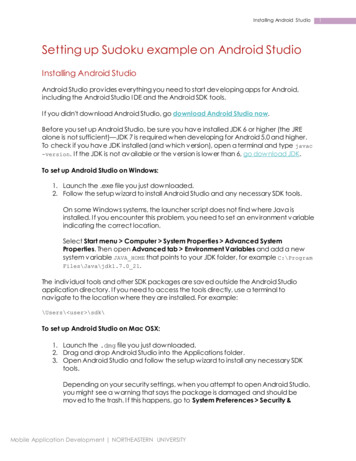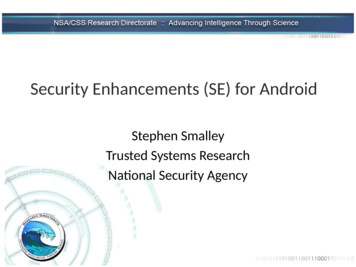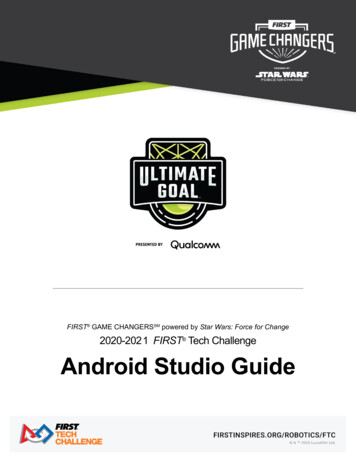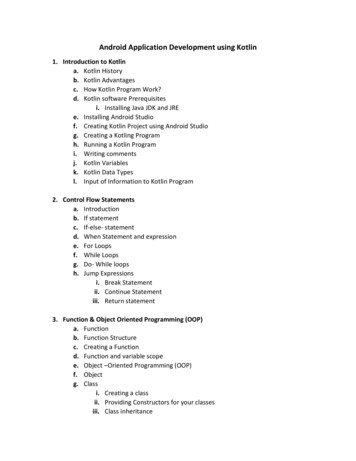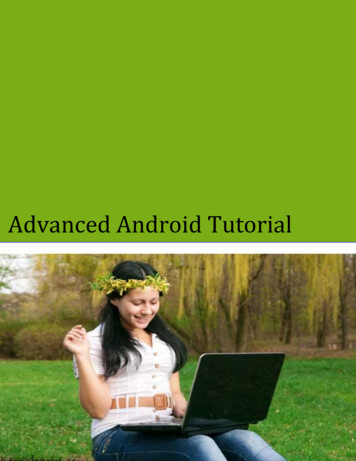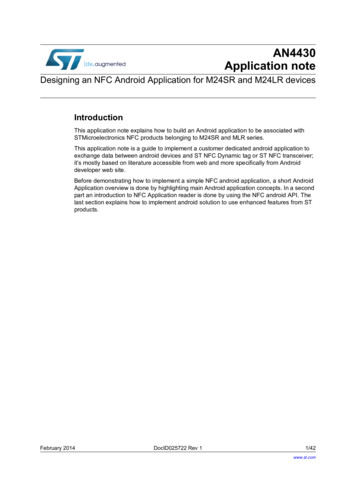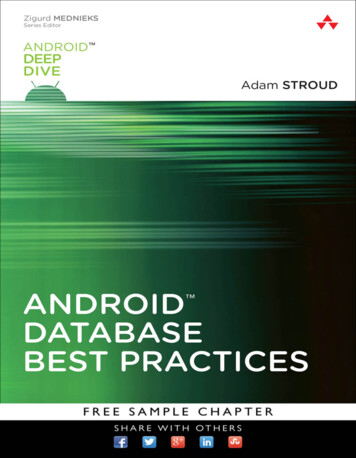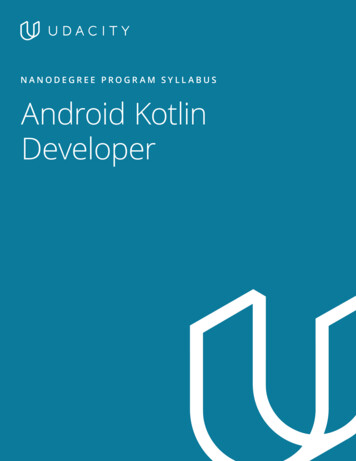
Transcription
Android ArchitectureAlexandra Harrison & Jake Saxton
Overview History of Android Architecture Five Layers Linux KernelAndroid RuntimeLibrariesApplication FrameworkApplications Summary
History 2003 –Founded No product for two years, funded by Andy Rubin Planned the next generation of smartphones Open source evolution of “Danger” 2005 – Purchased by Google Sooner or G1? 2007 – Publically announced 2008 – Sold first phoneG1
Previous VersionsLollipop09/2014Marshmallow09/2014
Previous Versions Unnamed (1.0 1.1)CupcakeIce CreamCupcake (1.5)LollipopSandwichDonut (1.6) – Quick Search BoxÉclair (2.1) – High Density Displays, Traffic NavigationFroyo (2.2) – Voice Control, Hotspot, SpeedGingerbread (2.3) – Simpler, Battery Life, More appsHoneycomb (3.0) – Flexible interface, tabletsIce Cream Sandwich (4.0) - CustomizationJelly Bean (4.1) – Google Now, actionable notificationsKitKat (4.4) – “Ok Google”, voice control varietyLollipop (5.0) – fluid tactile screensMarshmallow (6.0) – battery life, app permissions, UI
Linux Kernel 3.6 with 115 patches Generic System Services PermissionsMemory and Process managementFile & Network I/ODevice Drivers Preemptive Multitasking Lean, efficient, and secure Open Source
Hardware Abstraction Layer (HAL) Software hooks between stack and hardware Hardware Specific Allows Applications tobe hardware ignorant
Android Runtime Dalvik Virtual Machine Core Java libraries Specific to Android development Apple: Swift (Objective C) Windows: Visual C (C ), Changes with OS Wrappers around C/C libraries ART (Android Runtime VM) Replaced Dalvik in Lollipop (Android 5.0) Advantages over Dalvik AOT (Ahead of Time) Compilation Improved Garbage Collection
Dalvik Virtual Machine Executes Android Applications Each Application runs within its own VM Each app is “sandboxed” Memory Management Multi-threading
Libraries C/C Play and record audio and videoInternet SecurityUser interface buildingGraphicsDatabase access
Library Examples WebKit Web Browser Engine OpenGL High Performance Graphics Render 2D or 3D Graphic Content libc Generic C library SQLite Storage and sharing of application data
Library Examples Cont. Surface Manager Off-screen buffering Apps can’t directly draw into screenDrawings go to off-screen bufferCombined with other drawingsReason behind window transparency Media Framework Provides media codecs allowing recording andplayback of different types of media
Application Framework Higher Level Services to Applications Environment in which applications are run andmanaged Package Manager Keeps track of installed Applications Apps can communicate with other Apps on device Window Manager Manages main window that comprises Application
Application Framework Cont. View System Provide Common User Interface Elements IconsButtonsText EntryEtc. Content Providers Databases that allow application to store andshare structured info
Application Framework Cont. Location Manager Allows application to receive location andmovement info generated by GPS Activity Manager Manages activity life cycle of applications Telephony Manager Manages all voice calls
Application Framework Cont. Resource Manager Manage various types of resources used inapplications Allows access to non-code embedded resources Strings Color settings UI Layout Notifications Manager Allows applications to display alerts
Applications Hosts Android Applications Written in Java Access to all Android APIs Executed in the VM (Dalvik or ART) Examples SMS client appDialerWeb BrowserContact manager
Conclusion Designed for mobile and flexibility Both in software and hardware 5 Layers Application Development Simple Java Access to all aspects of the Kernel Open Source APIs
Android Runtime Dalvik Virtual Machine Core Java libraries Specific to Android development Apple: Swift (Objective C) Windows: Visual C (C ), Changes with OS Wrappers around C/C libraries ART (Android Runtime VM) Replaced Dalvik in Lollipop (Android 5.


